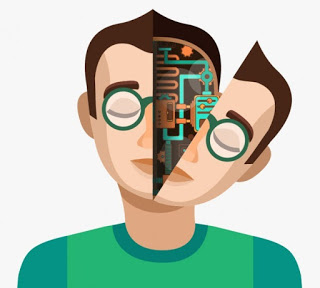Pause for a few minutes and imagine a future in which technologies teach humans. Call them robots, bots, chatbots, algorithms, teaching machines, tutoring software, agents, or something else. Regardless, consider them technologies that teach.

Vector created by Freepik
How far into the future is that time?
What do these technologies look like? Are they anthropomorphous? Are they human-like? In what ways are they human-like? Do they have voice capabilities, and if so, do they understand natural language? Are they men or women? Do they have a representation in the way that one would imagine a teacher – such as a pedagogical agent – or do they function behind the scenes in ways that seem rather innocuous – such as the Mechanical MOOC?
Do these technologies teach humans of all ages? Do they teach independently, support human teachers, or do human teachers assist them? Are they featured in articles in the New York Times, The Guardian, and The Economist as innovations in education? Or, are they as common as desks and chairs, and therefore of less interest to the likes of the New York Times? Are they common in all learning contexts? Who benefits from technologies that teach? Is being taught by these technologies better or worse than being taught be a human teacher? In what ways is it better or worse? Are they integrated in affluent universities and k-12 schools? Or, are they solely used in educational institutions serving students of low socioeconomic status? Who has access to the human teachers and who gets the machines? Are they mostly used in public or private schools?
How do learners feel about them? Do they like them? Do they trust them? Ho do learners think that these technologies feel about them? Do they feel cared for and respected? How do learners interact with them? How do human teachers feel about them? Would parents want their children to be taught be these technologies? Which parents have a choice and which parents don’t? How do politicians feel about them? How do educational technology and data mining companies view them?
Do teaching technologies treat everyone the same based on some predetermined algorithm? Or, are their actions and responses based on machine learning algorithms that are so complex that even the designers of these technologies cannot predict their behaviour with exact precision? Do they subscribe to pre-determined pedagogical models? Or, do they “learn” what works over time for certain people, in certain settings, for certain content areas, for certain times of the day? Do they work independently in their own classroom? Or, do colonies of robo-teachers gather, share, and analyze the minutiae of student life, with each robo-teacher carefully orchestrating his or her next evidence-based pedagogical move supported by Petabytes of data?
Final question for this complicated future, I promise: What aspects of this future are necessary and desirable, and why?

